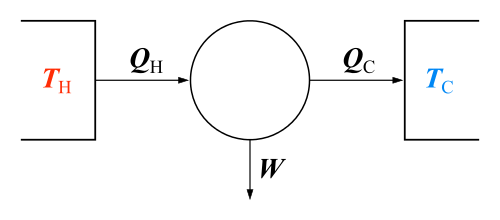Cheng cycle
| Thermodynamics | ||||||||||||
|---|---|---|---|---|---|---|---|---|---|---|---|---|
The classical Carnot heat engine | ||||||||||||
|
Branches |
||||||||||||
|
||||||||||||
| Book:Thermodynamics | ||||||||||||
The Cheng cycle is a retrofit to the gas turbine cycle. The Cheng cycle involves the heated exhaust gas from the turbine being used to make steam in a heat recovery steam generator (HRSG).[1] The steam so produced is injected into the gas turbine's combustion chamber to increase power output.[2] The process can be thought of as a parallel combination of the gas turbine Brayton cycle and a steam turbine Rankine cycle.[3][4] The cycle was invented by Prof. D. Y. Cheng of the University of Santa Clara who patented it in 1976.[5][6]
See also
References
- ↑ Penning, F. M. and de Lange, F. M. (1995) Steam Injection: analysis of a typical application Applied Thermal Engineering Vol. 16, No. 2, pp. 115 125
- ↑ De Paepe, M. and E. Dick (2001) Technological and economical analysis of water recovery in steam injected gas turbines, Applied Thermal Engineering, Volume 21, Issue 2, January 2001, Pages 135–156
- ↑ Stadler,F. and U. Schneider, (1997) ELIN Cheng Cycle, Elin Energieversorgung GmbH, 1997
- ↑ Motz,D.A. (1987) The Cheng Cycle: principles and applications, Ass. Energy Engng, 8th World Energy Engng Conf., Atlanta, USA
- ↑ Cen,Ke-fa Yong Chi, Jianhua Yan (2007) Challenges of Power Engineering and Environment: Proceedings of the International Conference on Power Engineering, Springer (Accessed August 2012)
- ↑ Cheng, D.Y. and A.L.C. Nelson (2002) Chronological development of the cheng cycle steam injected gas turbine during the past 25 years. in: Anon (Ed.), Proceedings of ASME Turbo Expo 2002, Amsterdam, ASME Paper No. GT-2002-30119 (2002), pp. 421–428
This article is issued from Wikipedia - version of the 11/5/2016. The text is available under the Creative Commons Attribution/Share Alike but additional terms may apply for the media files.
